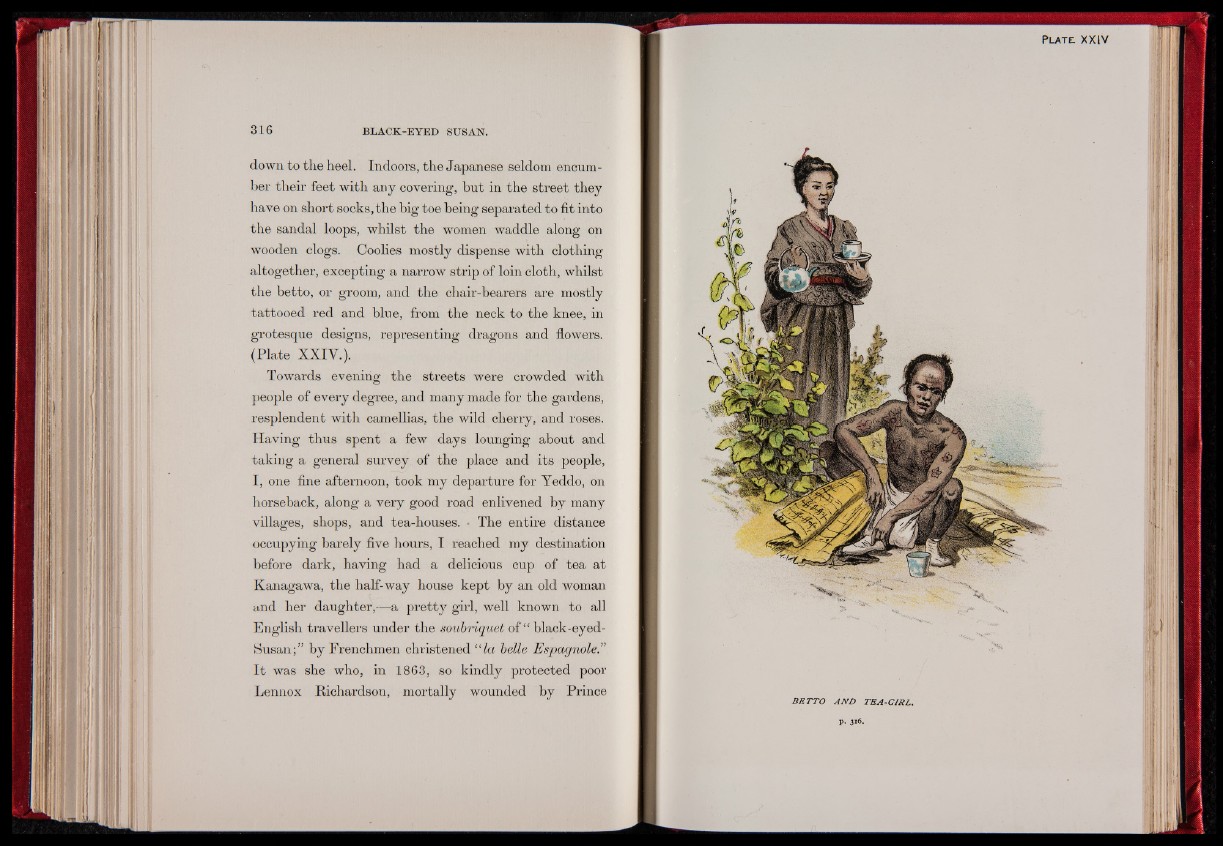
316 BLACK-EYED SUSAN.
down to the heel. Indoors, the Japanese seldom encumber
their feet with any covering, but in the street they
have on short socks, the big toe being separated to fit into
the sandal loops, whilst the women waddle along on
wooden clogs. Coolies mostly dispense with clothing
altogether, excepting a narrow strip of loin cloth, whilst
the betto, or groom, and the chair-bearers are mostly
tattooed red and blue, from the neck to the knee, in
grotesque designs, representing dragons and flowers.
(Plate XXIV.).
Towards evening the streets were crowded with
people of every degree, and many made for the gardens,
resplendent with camellias, the wild cherry, and roses.
Having thus spent a few days lounging about and
taking a general survey of the place and its people,
I, one fine afternoon, took my departure for Yeddo, on
horseback, along a very good road enlivened by many
villages, shops, and tea-houses. • The entire distance
occupying barely five hours, I reached my destination
before dark, having had a delicious cup of tea at
Kanagawa, the half-way house kept by an old woman
and her daughter,—a pretty girl, well known to all
English travellers under the soubriquet o f“ black-eyed-
Susan;” by Frenchmen christened “la belle Espagnole.”
I t was she who, in 1863, so kindly protected poor
Lennox Richardson, mortally wounded by Prince
B ETTO AND TEA-GIRL.
p. 316.